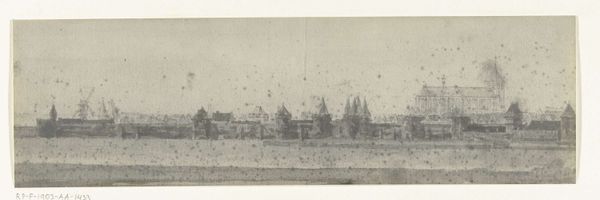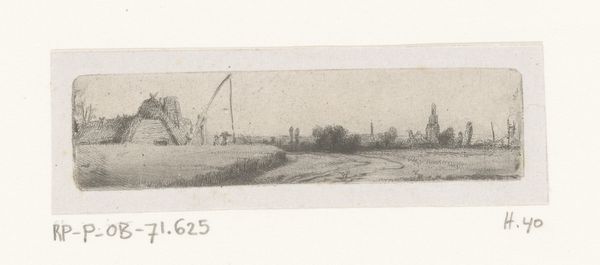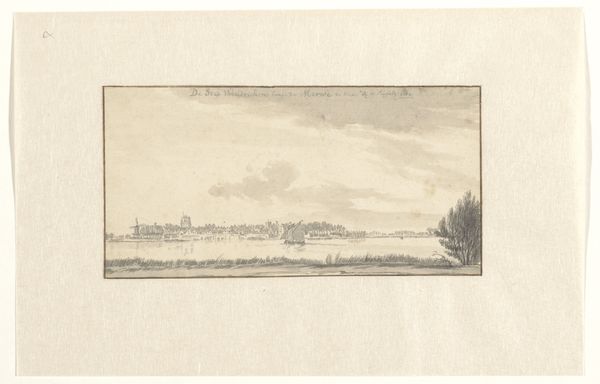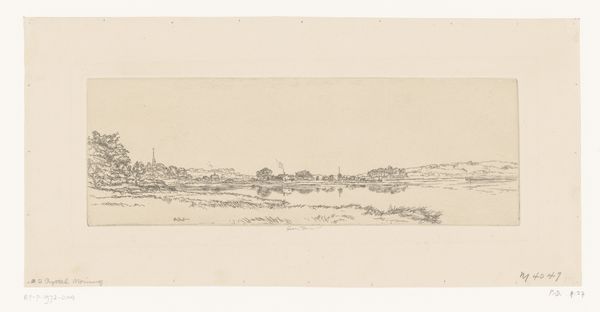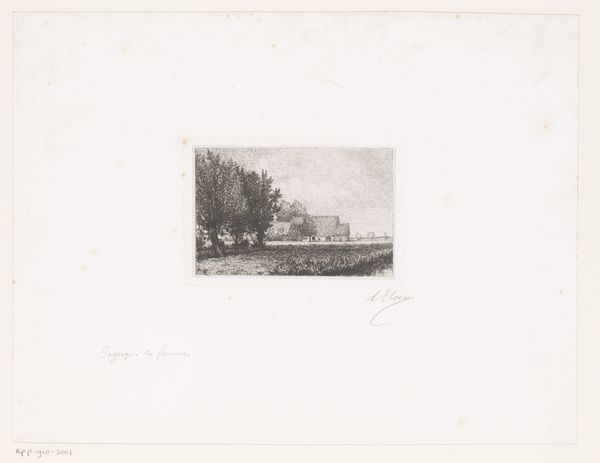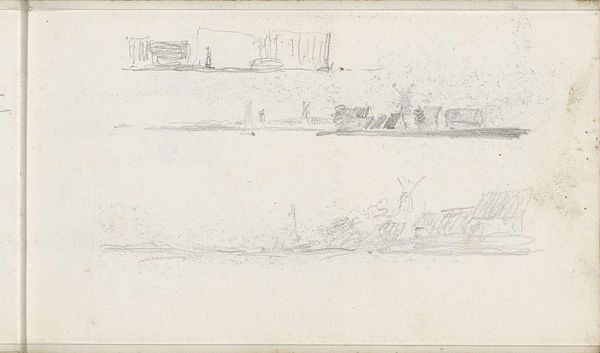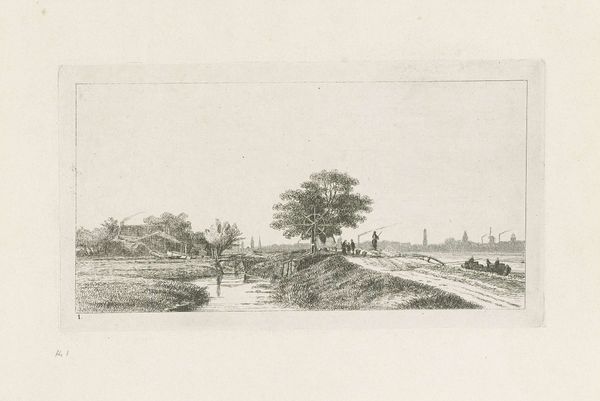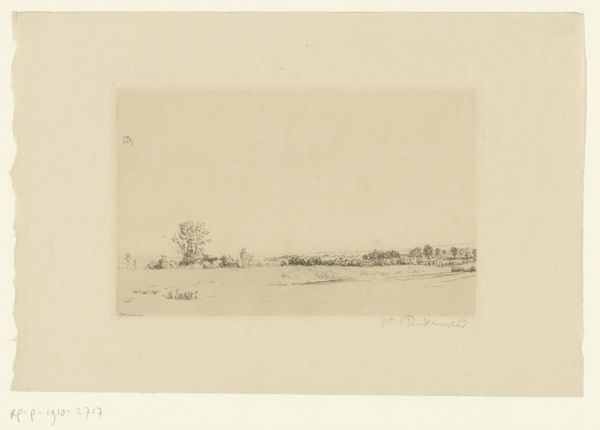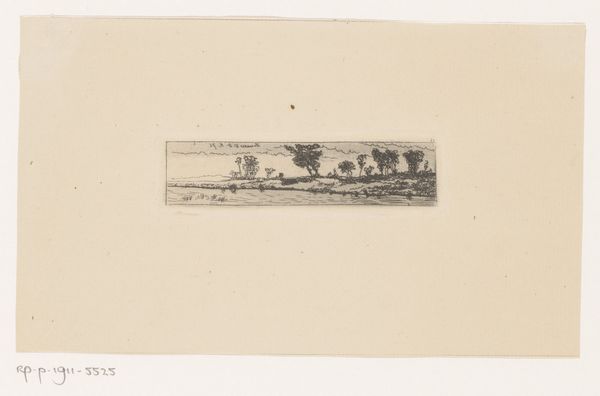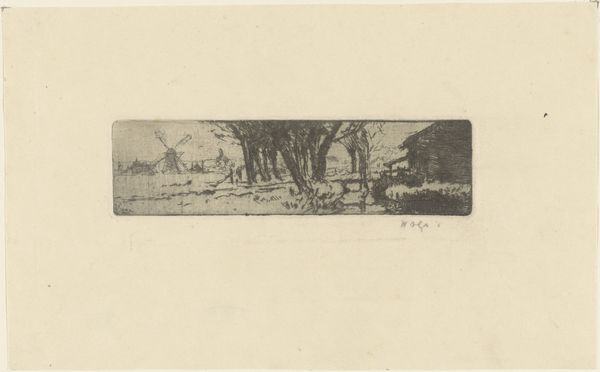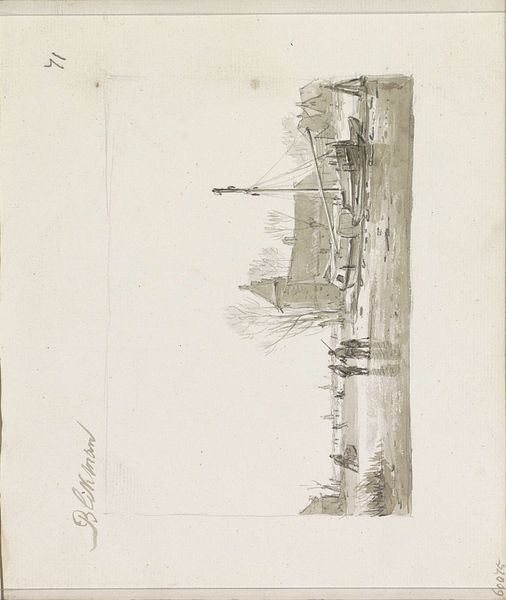
drawing, pencil
#
pencil drawn
#
drawing
#
pencil sketch
#
landscape
#
charcoal drawing
#
pencil drawing
#
pencil
#
cityscape
#
pencil work
#
realism
Dimensions: height 42 mm, width 292 mm
Copyright: Rijks Museum: Open Domain
Curator: We are looking at "Gezicht op Crèvecoeur, 1672," a drawing attributed to the Moreau brothers and estimated to have been created between 1900 and 1903. Editor: Immediately, the eye is drawn to the length and linearity of the drawing. The softness of the pencil rendering imparts a sense of gentle decay to the entire scene. It's fascinating to imagine the hand meticulously rendering each brick and branch. Curator: The choice of Crèvecoeur as a subject, a strategic fortification, adds another layer. Fortifications are very loaded symbols that offer the impression of community and safety, and inevitably evoke power, control, and even isolation. Editor: Indeed, the subject matter does make you ponder the purpose of a landscape that primarily depicts a structure designed for defense. The medium and its gentle application further complicate the picture, juxtaposing soft rendering with a strong defensive front. It speaks to an almost nostalgic lens to history. Curator: Perhaps the softness underscores a reflection on time and transience. Architectural strength depicted using the fragility of pencil is inherently reflective of the past. It invites contemplation about how the fort may function as a locus of memory. Editor: It’s easy to view the creation of preliminary landscape drawings as evidence of travel and leisurely engagements in natural beauty. What do we do when those studies take on fortified walls and man-made barriers as a subject. It begs questions about industrial production of images, too, whether this image acts as preparation for a final, refined version in other media. Curator: Thinking about production, a series of near-identical works can underscore a particular kind of collective or popular vision, not necessarily a unique point of view of the scene itself. So then, perhaps, it's about the type and status of buildings that get selected for documentation, rather than a sentimental point of view. Editor: I find myself pulled back to the sheer repetitive mark making to convey the details of Crèvecoeur. I have new appreciation for the labor involved in the artwork and the context for landscape drawings produced. Curator: And perhaps, thinking through its symbolism, we are also primed to approach history through visual cues. Editor: It seems like, ultimately, this work, and our exploration of it, invites further thinking about art and its reflection of history, labor, and collective representation.
Comments
No comments
Be the first to comment and join the conversation on the ultimate creative platform.
